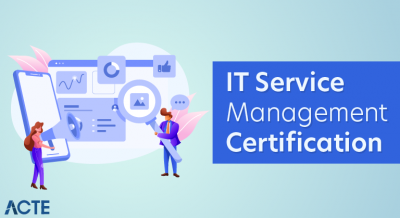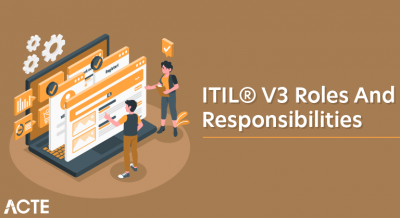
What are the study paths to become TOGAF 9 Certified?
The paths to certification and applicable examinations are shown in the diagram below:

How can I find out about the syllabus and examinations?
Firstly to obtain a high level view, you should read the datasheets here for the appropriate level or path for certification you are considering. For detail of the syllabus see this page.
There are three examinations as follows:
- TOGAF 9 Part 1 – Pass mark 55% (22 or more points out of a maximum of 40)This exam comprises 40 questions in simple multiple choice format, covering the Level 1 learning outcomes (see the Conformance Requirements for detail). Each correct answer scores a single point.
- TOGAF 9 Part 2 – Pass mark 60% (24 or more points out of a maximum of 40)This exam comprises 8 complex scenario questions, with gradient scoring. This exam is open book and covers the complete Level 2 learning outcomes. The correct answer scores 5 points, the second best answer 3 points, the third best answer 1 point. The distracter scores zero points.
- TOGAF 9 Combined Part 1 and 2 – This is a combined TOGAF 9 Part 1 and Part 2 examination for candidates who want to achieve Level 2 certification directly in a single examination. It consists of two sections, with pass marks as per the TOGAF 9 Part 1 and 2 examinations described above. Each section must be passed in order to obtain an overall pass mark. If you fail a section then no certification is awarded, however you only need retake the Examination(s) corresponding to the failed section(s).
What’s new in TOGAF 9.1?
The most recent version of TOGAF was updated to include:
- Content metamodel: This lifecycle process guides creation and management of enterprise architecture within the guidelines of the ADM. It helps businesses implement proprietary architecture into another architecture tool, using output checklists, a streamlined approach and a richer, more detailed standard for describing architectures.
- Partitioning: TOGAF 9 introduces suggestions and guidance for partitioning specific architectures within the enterprise.
- Architecture Repository: This acts as a document that contains all details pertaining to the enterprise architecture and any relevant projects, and it includes ideas, designs, frameworks, policies, process, and so on.
- Enterprise Continuum: This document addresses the more abstract concepts in the framework by establishing how everything defined in the architecture repository fits into the process and how each asset relates to one another and to the TOGAF framework. It’s also how businesses can help IT and other business units relate to one another with a common language, to improve communication and reduce confusion.
- ADM Guidelines and Techniques: This expands on information in the ADM, including how to apply it within your organization, when it should be used, how it relates to TOGAF and security considerations.
TOGAF’s business benefits
- TOGAF helps organizations implement software technology in a structured and organized way, with a focus on governance and meeting business objectives. Software development relies on collaboration between multiple departments and business units both inside and outside of IT, and TOGAF helps address any issues around getting key stakeholders on the same page.
- TOGAF is intended to help create a systematic approach to streamline the development process so that it can be replicated, with as few errors or problems as possible as each phase of development changes hands. By creating a common language that bridges gaps between IT and the business side, it helps bring clarity to everyone involved. It’s an extensive document — but you don’t have to adopt every part of TOGAF. Businesses are better off evaluating their needs to determine which parts of the framework to focus on.
How Does TOGAF Work?
How TOGAF works can be broken down into three key areas for Enterprise Architecture framework Development.
The first is clarity and well-established terminology.
- This is used during the development process. If you ask a builder and a marketing executive to give their own definitions of architecture, their answers will be poles apart. Without a solid idea of not just what its professionals are saying but also how they are saying it, an organization will suffer confusion and delays, inevitably.
- To establish the meaning behind key terminology in the early stages of the process enables efficient communication across the board. This converts to the clarity of vision in establishing goals, along with the methodologies designed to achieve them. TOGAF® provides this terminology, allowing certified professionals to collaborate with ease, even across disparate industries.
The second is setting clear and defined processes to be followed.
- This is supported by the Architecture Development Method by TOGAF®. It is a cycle for architecture development that outlines several key steps for professionals to follow while also, guiding users via a clear and versatile methodology, simultaneously. This allows individuals involved to apply and develop their knowledge in practice.
- Finally, The Open Group Architecture Framework provides all the necessary assets required to carry out architectural development. The framework outlines a clear procedure to manage and document changes as they occur.
- This helps in creating future Architecture Development Method cycles, which, in turn, will cut down on the time required for further developments down the line.
TOGAF Business Architecture Part 1 Exam
- This is the examination for the TOGAF Business Architecture Level 1 credential. It leads to the award of an Open Badge.
- This exam comprises 30 questions in a simple multiple choice format, covering the TOGAF Business Architecture Level 1 learning outcomes (see the Conformance Requirements for detail). Each correct answer scores a single point. The pass mark is 60% (18 or more questions out of a maximum of 30).
Completing Certification Process
- Once the candidate has appeared for the examination, his result is sent from the Prometric center to the Open Group. An email is received from the Open Group (typically within 6 days) which specifies the information on logging in to the web certification system at the Open Group to complete the certification.
- If the email is not received, candidates can drop an email to togaf-cert-admin(at)opengroup(dot)org.
- Once the entire certification process is completed, candidates can give permission to show their details in the Certification register, available at the Open Group website. TOGAF certification is valid for lifetime and doesn’t need any renewal.
As a TOGAF certified professional, you’ll act as a “simplifier” who can uncomplicate complex technical processes. The framework provides a standard architecture development process and common definitions of components and deliverables needed to architect an enterprise.
- Designation
- Annual Salary
- Hiring Companies






